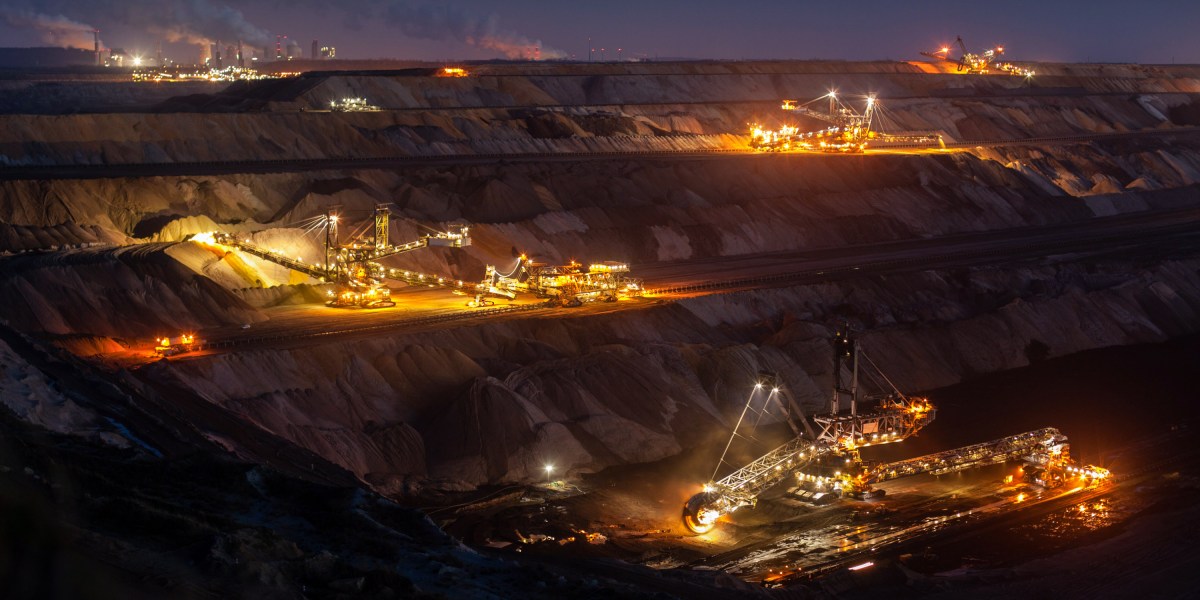Want less mining? Switch to clean energy.
Political fights over mining and minerals are heating up, and there are growing environmental and sociological concerns about how to source the materials the world needs to build new energy technologies.
But low-emissions energy sources, including wind, solar, and nuclear power, have a smaller mining footprint than coal and natural gas, according to a new report from the Breakthrough Institute released today.
The report’s findings add to a growing body of evidence that technologies used to address climate change will likely lead to a future with less mining than a world powered by fossil fuels. However, experts point out that oversight will be necessary to minimize harm from the mining needed to transition to lower-emission energy sources.
“In many ways, we talk so much about the mining of clean energy technologies, and we forget about the dirtiness of our current system,” says Seaver Wang, an author of the report and co-director of Climate and Energy at the Breakthrough Institute, an environmental research center.
In the new analysis, Wang and his colleagues considered the total mining footprint of different energy technologies, including the amount of material needed for these energy sources and the total amount of rock that needs to be moved to extract that material.
Many minerals appear in small concentrations in source rock, so the process of extracting them has a large footprint relative to the amount of final product. A mining operation would need to move about seven kilograms of rock to get one kilogram of aluminum, for instance. For copper, the ratio is much higher, at over 500 to one. Taking these ratios into account allows for a more direct comparison of the total mining required for different energy sources.
With this adjustment, it becomes clear that the energy source with the highest mining burden is coal. Generating one gigawatt-hour of electricity with coal requires 20 times the mining footprint as generating the same electricity with low-carbon power sources like wind and solar. Producing the same electricity with natural gas requires moving about twice as much rock.
Tallying up the amount of rock moved is an imperfect approximation of the potential environmental and sociological impact of mining related to different technologies, Wang says, but the report’s results allow researchers to draw some broad conclusions. One is that we’re on track for less mining in the future.
Other researchers have projected a decrease in mining accompanying a move to low-emissions energy sources. “We mine so many fossil fuels today that the sum of mining activities decreases even when we assume an incredibly rapid expansion of clean energy technologies,” Joey Nijnens, a consultant at Monitor Deloitte and author of another recent study on mining demand, said in an email.
That being said, potentially moving less rock around in the future “hardly means that society shouldn’t look for further opportunities to reduce mining impacts throughout the energy transition,” Wang says.
There’s already been progress in cutting down on the material required for technologies like wind and solar. Solar modules have gotten more efficient, so the same amount of material can yield more electricity generation. Recycling can help further cut material demand in the future, and it will be especially crucial to reduce the mining needed to build batteries.
Resource extraction may decrease overall, but it’s also likely to increase in some places as our demands change, researchers pointed out in a 2021 study. Between 32% and 40% of the mining increase in the future could occur in countries with weak, poor, or failing resource governance, where mining is more likely to harm the environment and may fail to benefit people living near the mining projects.
“We need to ensure that the energy transition is accompanied by responsible mining that benefits local communities,” Takuma Watari, a researcher at the National Institute for Environmental Studies and an author of the study, said via email. Otherwise, the shift to lower-emissions energy sources could lead to a reduction of carbon emissions in the Global North “at the expense of increasing socio-environmental risks in local mining areas, often in the Global South.”
Strong oversight and accountability are crucial to make sure that we can source minerals in a responsible way, Wang says: “We want a rapid energy transition, but we also want an energy transition that’s equitable.”




